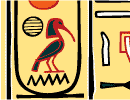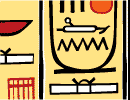|
Inside
the Pyramid of Khafre
Here's
the diagram of the internal passageways and chambers. We'll enter through the
lower entrance, the top entrance is sealed off by a door, as seen in the last
section. This pyramid contains 2 known chambers. One chamber is subterranean,
carved into the very bedrock. The other has its floor carved into the bedrock
while its upper walls and ceiling pierce into the base of the pyramid.
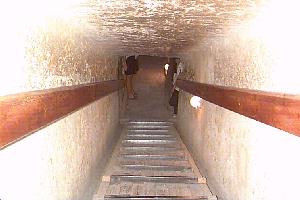
As you enter the short descending passageway through the lower opening on the
north side of the pyramid, you descend until the passageway levels off.
This
level passageway is higher, almost a hallway, with a large empty niche in the
wall on the left side, just past the mid point of the passage.
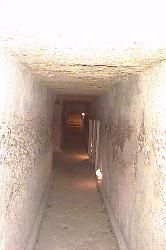
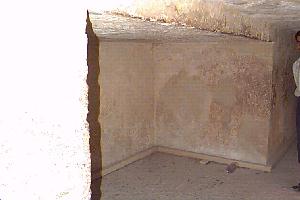
To
the right, across from the niche, is a short descending passageway, shown here
with its open grating.
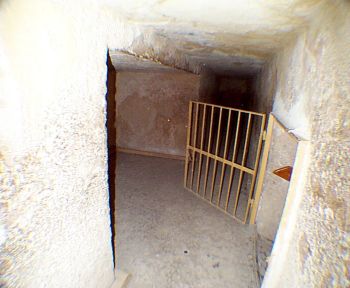
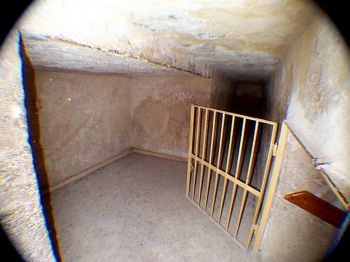
Looking
into the passageway that leads to the first chamber.
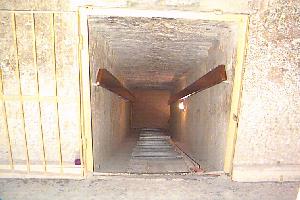
This
chamber which is carved in the plateau bedrock is 34' x 10'. It contains no
sarcophagus and also includes a pointed ceiling. This chamber may have served
for storage of offering material, treasure, or have been the equivalent of a
serdab. Perhaps it is this pyramid's equivalent of the middle or so-called Queen's
Chamber of the Great Pyramid, which also has a pointed ceiling. However, this
room does not contain any niche in the wall for the life-size statue of the
king, instead its east wall frames the entrance.
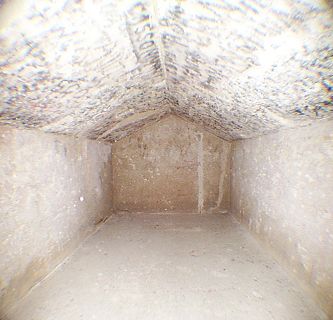
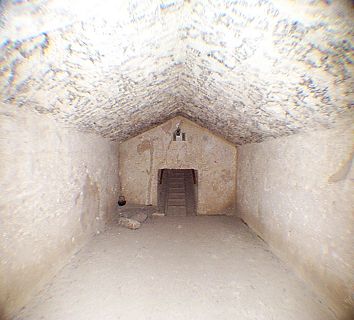
As
you exit this chamber and continue to the right, at the end of the passageway
lies a ramp which ascends into the next passageway. Once you climb this ramp,
if you turn around, you can also see the passageway that leads back up to the
higher entrance on the north side. Continuing south down the passageway leads
to the main burial chamber.
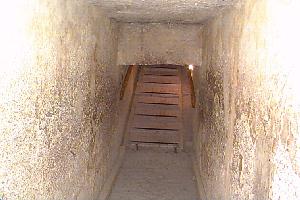
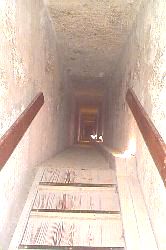
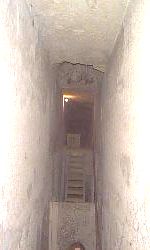
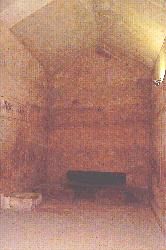
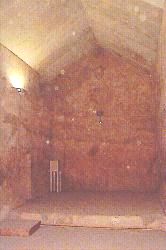
On
this higher level there is a chamber which is ft. 46.5 ft. long and 16.5 ft.
wide. The ceiling also comes to a point. There is a unique black granite sarcophagus
in this room in that it was built to be sunken into the floor. The original
lid, though no longer attached, lies propped up next to the coffer near the
west wall. It is possible that the open niche against the east side of the coffer
held the king's canopic chest, the box containing the mummified organs of the
king, within ceremonial vases. There are a few other examples of this style
in other Old Kingdom tombs.
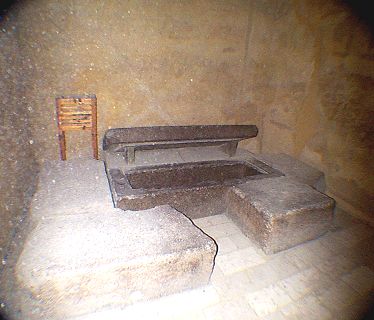
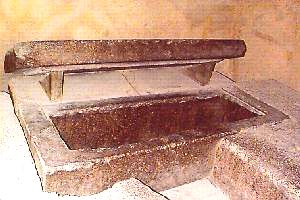
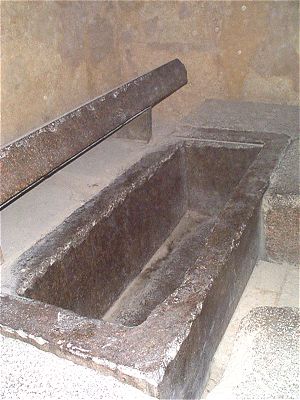
By
the time this pyramid was reopened in 1818 by Giovanni Belzoni, the body of
the king and any sign of royal treasure had been long gone. Belzoni left his
graffiti in this chamber on March 2, 1818, which is still present today on the
south wall of the burial chamber.
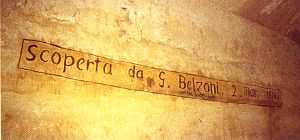
Return
to Giza
Return
to Outside
Special
Thanks to Andrew Bayuk for photographs
|
